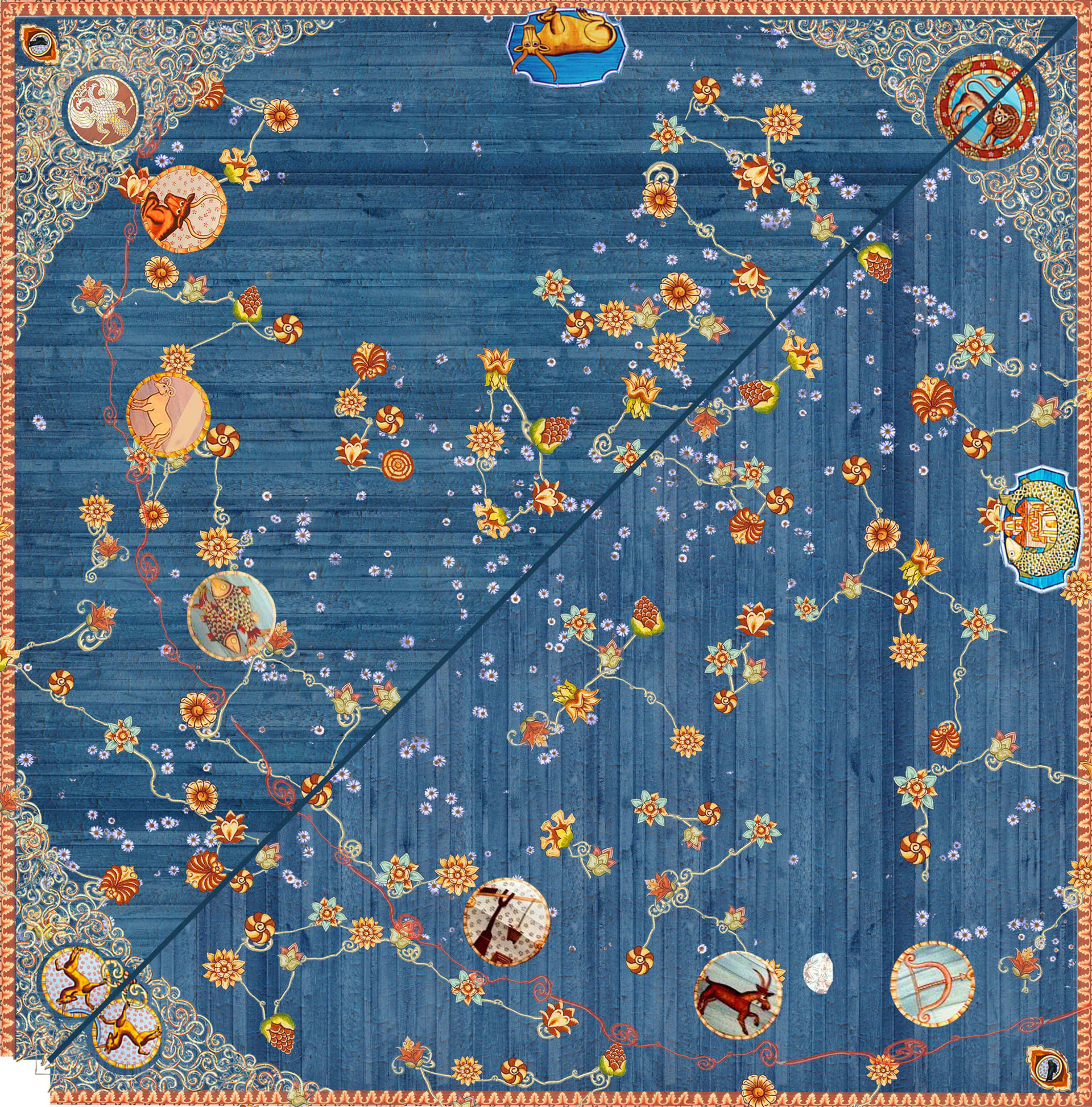The ceiling of the synagogue looks like a map of the starry sky, reproducing the position of the stars on September 29, 1941 – the first day of the mass shootings in BabynYar. The synagogue is made of centuries-old oak wood collected from old abandoned buildings from different parts of the country.

Project description by Manuel Herz Architects
Babyn Yar is a wooded area with a deep ravine located in the west of Kyiv, Ukraine, that used to mark the edge of the city. It is the site of one of the worst massacres of the Nazi regime, when on September 29th and 30th, 1941 approximately 35,000 Jews were shot and killed by German troops. Over the following weeks and months, an additional 100,000 Jews, Soviet prisoners of war, communists, Ukrainian nationalists, Roma, and patients of a nearby psychiatric hospital were murdered within the grounds of Babyn Yar. A ‘holocaust by bullets’, represents one of the worst atrocities of our modern era.
The Babyn Yar Holocaust Memorial Foundation has started a process of implementing a series of smaller and larger interventions over the coming years to commemorate the history of the site in all its complexity. The Babyn Yar Synagogue represents the first building within this initiative. It is meant as a synagogue that will commemorate the history, but also reestablish a living Jewish presence on the site today.
The Design.
If we conceptualize the synagogue as a building typology in its purest essence, we can consider it as a book. During the religious service, a congregation comes together, to collectively read a book - the Siddur (the book of prayers) or the Bible. The shared reading of the book opens a world of wisdom, morals, history, and anecdotes to the congregation. It is this notion that informs the design of the new Babyn Yar Synagogue.
We combine this idea with a different type of book, something that is quite playful: the pop-up book. The pop-up book is a magic book, that unfolds into three dimensions. From a flat object of a book, when we open it, new worlds unfold, that we could not imagine before. In a sense, the pop-up book can act as a metaphor for the Synagogue. Furthermore, the pop-up book triggers fascination: no one can resist the temptation of opening up these books of wonders and exploring them. This quality of a “cabinet of wonder” and a new universe that unfolds, is what I wanted to create in the location of Babyn Yar.
The site is located within the trees, just behind an existing small monument, a Menorah that dates back to the early 1990s. The building sits on a wooden platform that hovers slightly above the ground. Great care was taken to prevent a deep foundation, so as not to disturb the existing soil. The building itself is a wooden construction with an inner steel framework. When closed, the building is flat, vertical of approximately 8 meters in width and 11 meters in height. The building is manually opened and then unfolds into the three-dimensional space of the synagogue. The opening process is a collective ritual, performed by the congregation, as a manual and physical task, intentionally without the support of a motor. The unfolding space, with the Bimah (reading platform for the Torah) in the center, with its benches and balcony, is this new universe that has opened by reading the book together.
The wood is sourced from old oak wood, coming from all parts of Ukraine. This ensures that the building has a unifying quality, down to the very material used in its construction. The wood is more than a hundred years old. It will therefore connect the time before the massacre, to the contemporary era.
The walls are decorated with prayers and blessings, celebrating a reawakening. The main prayers of the Jewish liturgy, such as the Shma’ Israel, or the Kaddish are written on the walls. But maybe more surprisingly, other blessings such as the blessing for turning a nightmare into a good dream, are displayed on the main wall, above the “Aron ha-Kodesh”, the place where the bible scrolls are kept. This blessing was written on the walls of the historic Synagogue of Gwozdziec of Western Ukraine dating back to the 17th century, and it is a perfect theme for the new Synagogue.
The ceiling is painted with a myriad of symbols and iconography also referencing the interior of the historic synagogues of Ukraine from the 17th and 18th centuries that have since been destroyed. It celebrates a colorful universe that will become visible above the heads of the visitors of the Synagogue. But these symbols have an additional meaning: Together, they recreate the star constellation that was visible over Kyiv on the night of September 29th, 1941. For the visitors, looking up into the ceiling of the new synagogue will create a subtle link to the night that the massacre started.
I believe the dynamic quality of the building is important. Not only because it is a new ritual and collective process. But also because it has a subtle quality: It does not impose itself on the territory. In a way, it has a very tender approach to the ground. This ground which is almost sacred.































































